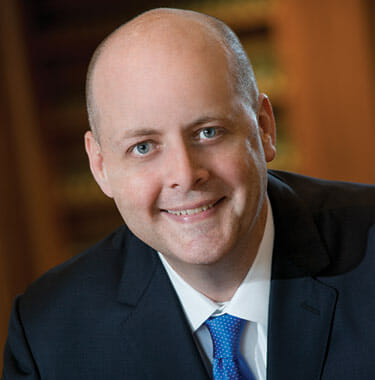April 15, 2022

On April 5, 2022, a jury in Las Vegas, Nevada, rendered an insurance bad faith verdict against Sierra Health and Life Insurance Company (a subsidiary of United Healthcare) in the amount of $200 million. The award included $40 million in compensatory damages for the physical, mental, and emotional harm caused to Sierra policyholder Bill Eskew resulting from Sierra’s malicious and oppressive denial of Bill’s health insurance claim for cancer treatment. It also included an award of $160 million in punitive damages, which are designed to punish Sierra for its conduct in denying Mr. Eskew’s claim. The punitive damages are also designed to deter Sierra and other health insurance companies from engaging in similar conduct in the future.
Awarded Damages in Case Against Sierra Health & Life Insurance Company
$40 million – Compensatory damages
$160 million – Punitive damages
Details About the Sierra Health & Life Insurance Denial of Coverage Case
Cancer Patient Bill Eskew Was Denied Coverage for Proton Therapy Treatment
Sandy Eskew brought this lawsuit on behalf of her now-deceased husband Bill, alleging insurance bad faith against Sierra Health & Life Insurance, Co. (a subsidiary of United Healthcare) arising out of Sierra’s denial of Bill’s claim for proton beam therapy to treat his lung cancer.
Sandy contacted Doug Terry in early 2019, having read about the case of Cunningham v. Aetna which he tried in late 2018 in Oklahoma City related to a proton therapy denial. The Cunningham case resulted in a $25.5 million verdict in favor of the Cunningham family.
Doug Terry Put Together a Powerful Team
Doug was lucky enough for Sandy to hire him, and he associated his friend and excellent lawyer Matt Sharp of Reno, Nevada, to work the case with him from the beginning. Matt did an outstanding job throughout. The trial team included excellent expert witnesses. Stephen Prater of San Jose, California, was the expert on insurance industry standards and the duty of good faith and fair dealing. Dr. Andrew Chang of San Diego, California, was the expert on radiation oncology issues, including all things related to proton beam therapy. Both provided the jury with the information they needed to understand the complex insurance and medical issues involved in the case, and they did so in a compelling way.
Bill Eskew’s Diagnosis and Effort to Get the Best Medical Care Possible to Save His Life
Bill Eskew was diagnosed with Stage IV metastatic lung cancer in the summer of 2015 when he was 63 years old. Bill did not know he had cancer at all until he swung a golf club, and his arm broke above the elbow due to a metastatic tumor that had spread there from his primary lung tumor. Bill and his wife Sandy knew they were going to need excellent care to give Bill the best chance to beat the cancer, or at least to live as long and as well as he could. Sandy researched the best cancer centers in the world and the best available treatment. She learned that the University of Texas MD Anderson Cancer Center in Houston, Texas, was the top-rated cancer center and that proton beam therapy was the best treatment available.
Bill’s existing health insurance policy was ending at the end of 2015, and his insurance carrier was leaving the state of Nevada. Sandy knew she needed to get Bill a new policy that would begin in 2016. She went to a local agent in Las Vegas and began looking into the Sierra “Platinum” policy. Sandy asked if proton beam therapy at MD Anderson was covered, and she was given a sample copy of the insurance policy.
That policy provided that therapeutic radiation (which includes proton beam therapy) is a covered service, with no exclusion of proton beam therapy. The policy provided that services are covered only if they are “medically necessary.”
Bill and Sandy proceeded to MD Anderson in Houston, where Bill was evaluated by a world-renowned thoracic radiation oncologist, Dr. Zhongxing Liao. Dr. Liao and the team of doctors and scientists at MD Anderson conducted tests to determine what type of radiation treatment would be best for Bill. They determined that proton beam therapy would give them the best chance to cure Bill’s cancer, with the least risk of seriously detrimental side effects.
What Is Proton Beam Therapy and When Is it Used?
Proton beam therapy is a form of radiation that can be targeted more precisely than other forms of radiation therapy to deliver a killing dose of radiation to the cancerous tumor while avoiding harmful doses of radiation to healthy tissues and organs adjacent to the tumor. Because one of Bill’s tumors was in the middle of his chest, right next to his esophagus, trachea, heart and healthy lung tissue, MD Anderson’s testing showed that proton beam therapy was a superior method of killing the tumor and avoiding higher doses of radiation to those other areas.
MD Anderson submitted a request to Sierra for prior authorization of the proton beam therapy, including a letter explaining the rationale for the need for proton beam therapy, along with Bill’s medical records supporting the request. The request for proton beam therapy was denied by Sierra. Instead, Sierra approved an alternative photon-based form of radiation called Intensity-modulated Radiation Therapy (IMRT). MD Anderson had compared proton beam therapy and IMRT in their testing and concluded that proton beam therapy was a superior treatment for Bill. The cost of IMRT is about half that of proton beam therapy.
What Happened after the Denial of Coverage for the Recommended Proton Beam Therapy
The Denial Led to Tremendous Suffering for Bill
After the denial, Bill and Sandy were faced with an awful choice. Bill could either go untreated with radiation, which would certainly have led to his death. Or Bill could be treated with IMRT knowing that it increased the chances of his developing side effects from the IMRT radiation, which could not be delivered as accurately as proton beam therapy. Bill decided to be treated, because he wanted to live as long as he could to enjoy his rich and happy family life with Sandy, his children and grandchildren.
Bill underwent a six-week course of radiation treatment with IMRT, then returned home to Las Vegas. During the treatment, he started to suffer symptoms of esophagitis related to the radiation. After the treatment was completed, the esophagitis got worse. Ultimately, it progressed to Grade III esophagitis meaning it went from the equivalent of a bad, blistering sunburn of the lining of the esophagus to scarring of that area.
This caused Bill to suffer tremendous physical pain. It made it exceedingly difficult for Bill to eat, drink or swallow his medication.
Sandy, her two adult children and a family friend all testified at trial that Bill suffered from these terrible symptoms from the time of his radiation treatment to the time of his death a little over a year later. The esophagitis caused Bill’s health to deteriorate. Cancer patients need good nutrition and hydration so their bodies can fight the cancer. When Bill tried to eat, it always felt to him as though he had food caught in his throat that wouldn’t go all the way down. It was painful for him to swallow anything at all. He would regularly vomit and have dry heaves if he attempted to eat or drink.
In addition to his physical suffering, Bill suffered a loss of his quality of life. He became reserved, withdrawn, depressed, and angry at Sierra. This dramatically affected what had been a very rich and happy family life with his wife, children, and grandchildren.
Why Did Sierra Health & Life Deny the Photon Beam Therapy Bill Needed?
Sierra assigned Bill’s request for coverage for proton beam therapy to a doctor who was unqualified to understand and evaluate Bill’s medical condition and the reasons why proton beam therapy was the best treatment for him. The Sierra doctor was a medical oncologist, not a radiation oncologist. Medical oncologists manage the chemotherapy part of a patient’s cancer treatment, not the radiation part. It became apparent at trial that the doctor who reviewed the claim lacked even a basic understanding of the medical issues involved with Bill’s claim.
The Sierra doctor was handling claims for Sierra as an independent contractor at the time of Bill’s denial (he has since gone to work at United Healthcare full time) and was handling claims part time in addition to having a full-time medical oncology practice. The doctor testified he was handling 20-25 claims a week for Sierra. He also testified that he spent 30-60 minutes reviewing Bill’s claim before denying it. However, the doctor’s billing records showed he handled 79 claims for Sierra the week he denied Bill’s claim, and he billed Sierra 16.5 hours for that work. This indicated to the jury that he spent an average of 12 minutes per claim.
Further, the Sierra doctor did not even look at the terms of the health insurance policy Sierra sold Bill before denying Bill’s claim. The doctor did not write or ever even see the denial letter which Sierra sent to Bill denying proton beam therapy. Instead, the letter was “cut and pasted” by a clerical person at Sierra from a spreadsheet containing stock claim denial language. Sierra refers to this as its “denial library.” The doctor’s signature was electronically stamped on the letter, and it was mailed out to Bill. The denial led to Bill’s receiving IMRT instead of proton beam therapy and suffering through the horrible symptoms that led to his inability to eat, as explained above.
What Experts Had to Say About the Case During the Trial
Dr. Chang explained to the jury what proton beam therapy is, the advantages it provides in sparing doses of radiation to healthy tissues, and why the MD Anderson treating doctor’s recommendation was correct under Bill’s circumstances. Mr. Prater explained to the jury what insurance is, the well-established insurance industry standards for good faith claim handling under Nevada law, and how Sierra had failed to comply with those industry standards in handling Bill’s request for coverage for proton beam therapy.
The defense essentially argued that there is not enough scientific evidence in the form of peer-reviewed, controlled clinical trial studies to support the use of proton beam therapy to treat lung cancer; that Sierra had a reasonable basis to deny the claim; and that the use of IMRT on Bill did not cause him any harm.
Sandy testified that she brought this lawsuit to stand up for Bill, because she believes what Sierra did to him is wrong. She also testified that she brought the lawsuit and went through all it took for her to get the case all the way to trial for one reason: She hoped that what happened to Bill at the hands of Sierra would not happen to anyone else in the future.
This $200 Million Verdict Sends a Message to Insurers
Doug and his co-counsel, Matt Sharp, believe the verdict is a strong statement by the jury that the manner in which Sierra handled Bill’s claim is not acceptable. Sandy, Matt, and Doug are hopeful that the message sent by the jury’s verdict will be heard, and that positive change will come from it. Sandy is gratified that Bill’s terrible journey to his death will not go unnoticed, and that it may help someone else, somewhere, in the future.
Doug and Matt want to thank all of those who supported their efforts to obtain justice for Bill Eskew. There are a lot of people on that list: the law firms’ staffs, friends at Friedman Rubin, the many trial lawyer friends who lent encouragement and ideas, top-notch trial tech person Jason Sanderson. And many thanks go to Seton Claggett and Alida DiGeralamo of Focus Graphics who put together excellent demonstrative exhibits with the expert witnesses, who all deserve credit.
We are ready to carry the torch forward for others who have similarly been denied coverage for proton beam therapy. If you believe you have a case, Doug Terry can help. Reach out to him today at 405-293-3541.



 After 25 years practicing in a larger firm, Doug chose to open his own practice in Oklahoma City. He brings his wealth of knowledge and his skills as a litigator to bear for his clients in matters of insurance bad faith, personal injury cases and class actions. He won $200 million and $25 million verdicts for clients in cases in which an insurer denied a health insurance claim. Doug has the distinction of being awarded a Martindale-Hubbell “AV Preeminent” rating from his peers in the legal community. He has also been selected as an Oklahoma Super Lawyer. [
After 25 years practicing in a larger firm, Doug chose to open his own practice in Oklahoma City. He brings his wealth of knowledge and his skills as a litigator to bear for his clients in matters of insurance bad faith, personal injury cases and class actions. He won $200 million and $25 million verdicts for clients in cases in which an insurer denied a health insurance claim. Doug has the distinction of being awarded a Martindale-Hubbell “AV Preeminent” rating from his peers in the legal community. He has also been selected as an Oklahoma Super Lawyer. [



